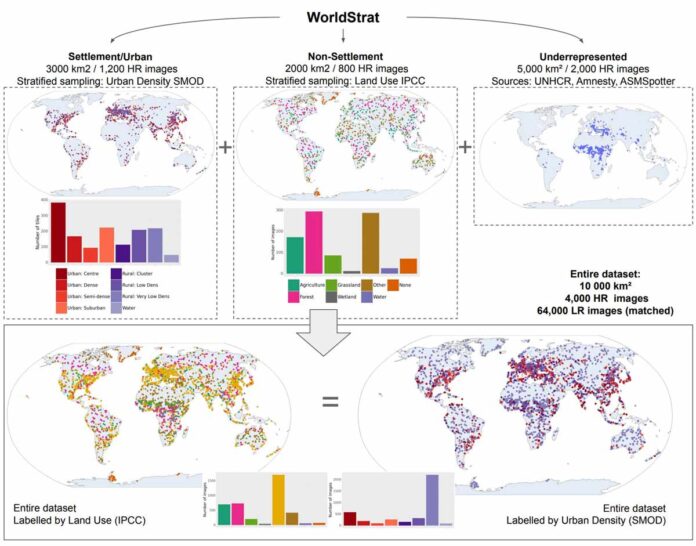Thanks to commercial data provided by ESA’s Third Party Missions (TPM) programme, scientists have created an open source planetwide dataset of high-resolution Earth observation imagery.
The WorldStrat product is the most comprehensive and detailed dataset of its kind.
It will be presented to over 15,000 artificial intelligence researchers later this month at the 36th Conference on Neural Information Processing Systems (NeurIPS 2022).
WorldStrat, which uses imagery from both privately-owned and institutional missions, enables global analyses and promotes the development of machine learning methods such as image resolution enhancement techniques.
Since its release in June, it has been downloaded more than 3000 times.
The dataset covers every type of location, urban density, and land use. These makes it useful for a wide range of applications such as disaster response, natural resource management, and urban planning.
Work on WorldStrat began in 2021 as part of an ESA-funded project.
“The combination of high-resolution commercial imagery and machine learning has huge potential to enable planetwide analyses. It could help to tackle all kinds of global challenges,” says Julien Cornebise, Honorary Associate Professor at University College London and project lead. “The problem is that commercial data are often locked behind a paywall. “ESA’s TPM programme made our project possible by providing free access to data that would normally be very expensive.”
Cornebise and his colleagues used data from the Airbus SPOT 6 and SPOT 7 missions. These were added to the TPM programme in 2012 and 2014, respectively, as part of the project. These satellites can deliver imagery with resolutions of up to 1.5 metres.
A total of 4000 highly detailed SPOT images were used, covering approximately 10,000 square kilometres of Earth’s surface.
In contrast to their high spatial resolution, these data frequently have a low temporal resolution. Because they are typically intended for specific commercial applications rather than long-term analyses.
Copernicus Sentinel-2 data, which are freely available, were used to address this issue. Although these images are less detailed than SPOT images, they are collected at regular intervals.

